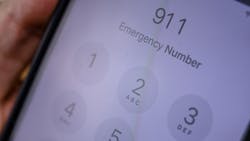Is Law Enforcement Ready for Next Generation of 9-1-1?
One commonality nationwide in public safety is 9-1-1. One number for emergencies was the vision in the mid-1960s, which has proven helpful to the public who moves between cities, counties, and even states. The first 9-1-1 call was 55 years ago, in 1968, yet many jurisdictions' existing 9-1-1 systems and equipment are not up-to-date and operate on legacy infrastructure and equipment.
The early 2000s saw increased discussion about NG911 or Next Gen 911. NG911 is a digital system based on Internet protocol (IP) that provides a digital environment to accommodate interoperability and growth. Initially, 9-1-1 operated using landline or wired phone systems through the original telephone infrastructure. As newer technology moves from analog to digital, upgrading and updating 9-1-1 and emergency call services within the digital environment is more accessible.
The public can interact with businesses and governmental agencies via chat, text, and even video calls. Yet emergency services cannot all process and handle this kind of digital information. PSAPs (Public Safety Answering Points), not entirely on an NG911 digital system, will need to move to digital to process multi-media information. The upgrade process from analog to digital should follow the accepted standards to ensure compatibility and growth.
NG911 Standards
NENA (National Emergency Number Association) outlined their i3 standards several years ago. These standards are reviewed regularly and updated as technology changes and improves. The NENA standards include the design and structure of the elements, including the software, hardware, databases, networking components, and interfaces needed to fully handle emergency calls through the 9-1-1 network and all associated data. In response, APCO (The Association of Public Safety Communications Officials) released a Definitive Guide to Next Generation 9-1-1. This guide includes requirements about interoperability, functionality, reliability, and technical aspects while including guidelines for the cybersecurity of NG911 systems.
Both standards have commonality and overlap on what Next Generation 9-1-1 should include. And both seek to set common standards for equipment and software, allowing public safety vendors to develop solutions that can work together. Shared and common standards are vital with PSAPs handling more text to 9-1-1, video, images, map coordinates, emergency activations, and more data from the public, interoperability, not only with neighboring agencies and services but from state to state and even globally, commonalities and shared standards are vital.
Legislation
Legislative changes at all levels of government continue to push for updating legacy systems to adaptable, digital solutions. However, funding for the upgrades continues to be problematic for many PSAPs as agencies compete for grant funding and work with vendors to begin the step-by-step piecing of a digital system. Commercial solutions are available to provide real-time video, language translation, locational services, and other digital data sharing. With NG911, those solutions could seamlessly integrate when the public sends video, images, calls, and other data directly to 911. However, these solutions are only sometimes cost-effective for PSAPs.
Two bills currently in the House of Representatives are H.R. 3565 - Spectrum Auction Reauthorization Act of 2023 and H.R. 1784 - Next Generation 9-1-1 Act of 2023, were introduced to help fund PSAPs that need to move from legacy 911 systems to digital NG911 systems. H.R. 3565 proposed the reauthorization of the FCC to auction portions of the radio frequency spectrum for a three-year period to raise a proposed $14.8 billion to move the nation’s legacy 911 systems to NG911. H.R. 1784 is a separate bill that would provide $15 billion in federal funds to support PSAPs that need to upgrade to NG911.
The future of NG911
Technology continues to be the future of public safety. Law enforcement continues to improve the use of artificial intelligence, drones, software, predictive analysis, and other solutions to support policing. With NG911, video, images, voice data, locational tracking, and other multimedia are shareable with field units or other agencies and saved in the records database for historical and investigative purposes.
The technology to operate one number emergency systems on a digital platform exists today. The ever-changing mandates from federal legislative changes, state and county legislative updates, and even excise tax and other funding changes at the various levels of government make planning updates and upgrades to NG911 difficult. Once the legacy equipment used for the last 55 years as the backbone of 9-1-1 is upgraded to more current and adaptable digital solutions, the plan for NG911 and digital interoperability will be complete. Until then, law enforcement will continue to do what policing does best: make the best with the tools at hand.
About the Author
Toni Rogers
Toni Rogers is a freelance writer and former manager of police support services, including communications, records, property and evidence, database and systems management, and building technology. She has a master’s degree in Criminal Justice with certification in Law Enforcement Administration and a master's degree in Digital Audience Strategies.
During her 18-year tenure in law enforcement, Toni was a certified Emergency Number Professional (ENP), earned a Law Enforcement Inspections and Auditing Certification, was certified as a Spillman Application Administrator (database and systems management for computer-aided dispatch and records management), and a certified communications training officer.
Toni now provides content marketing and writing through her company, Eclectic Pearls, LLC.

